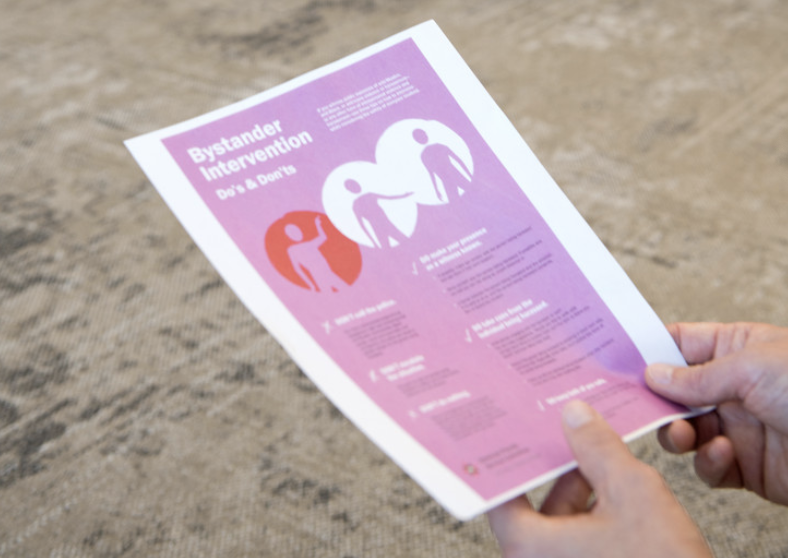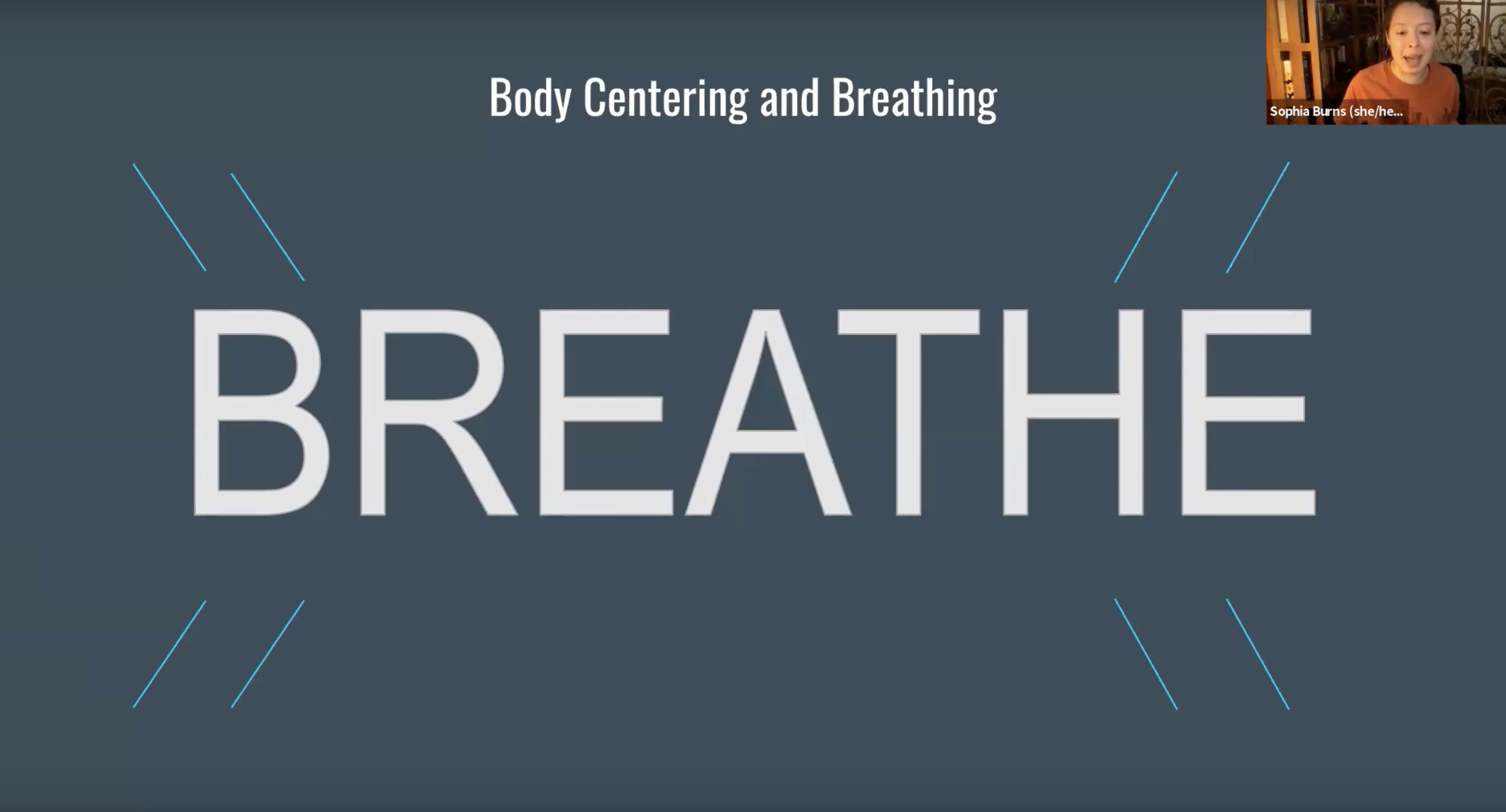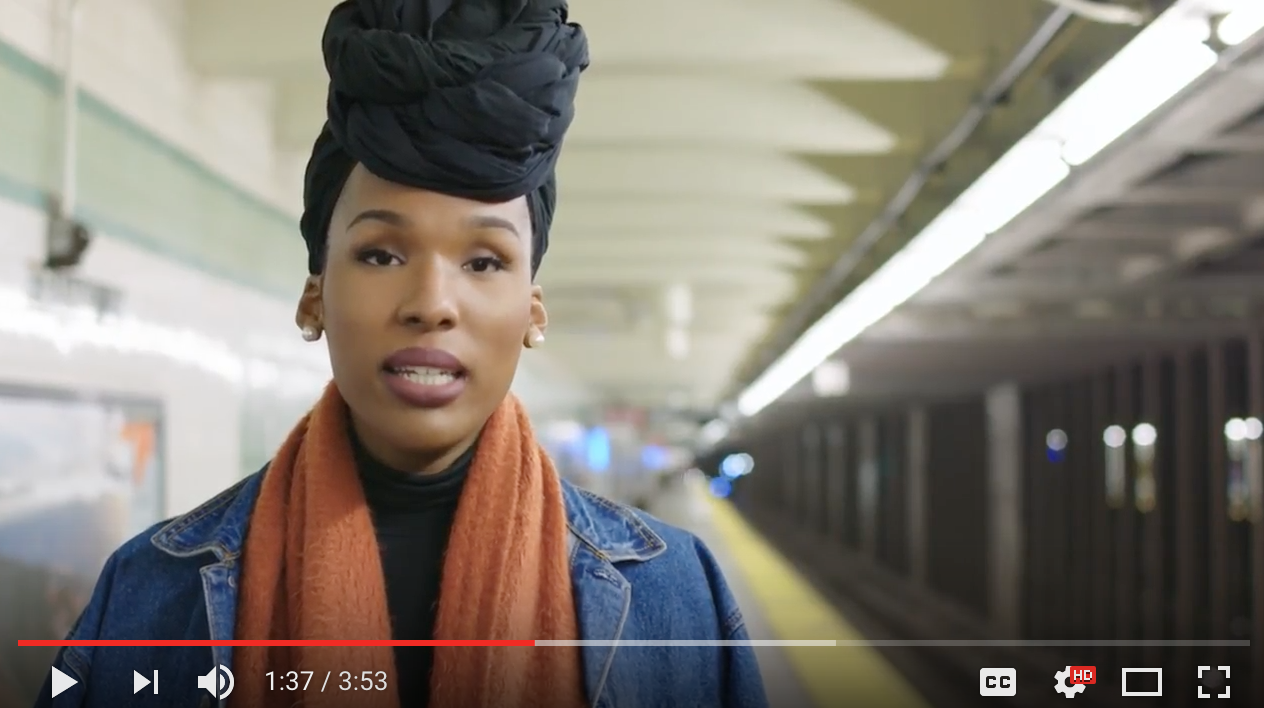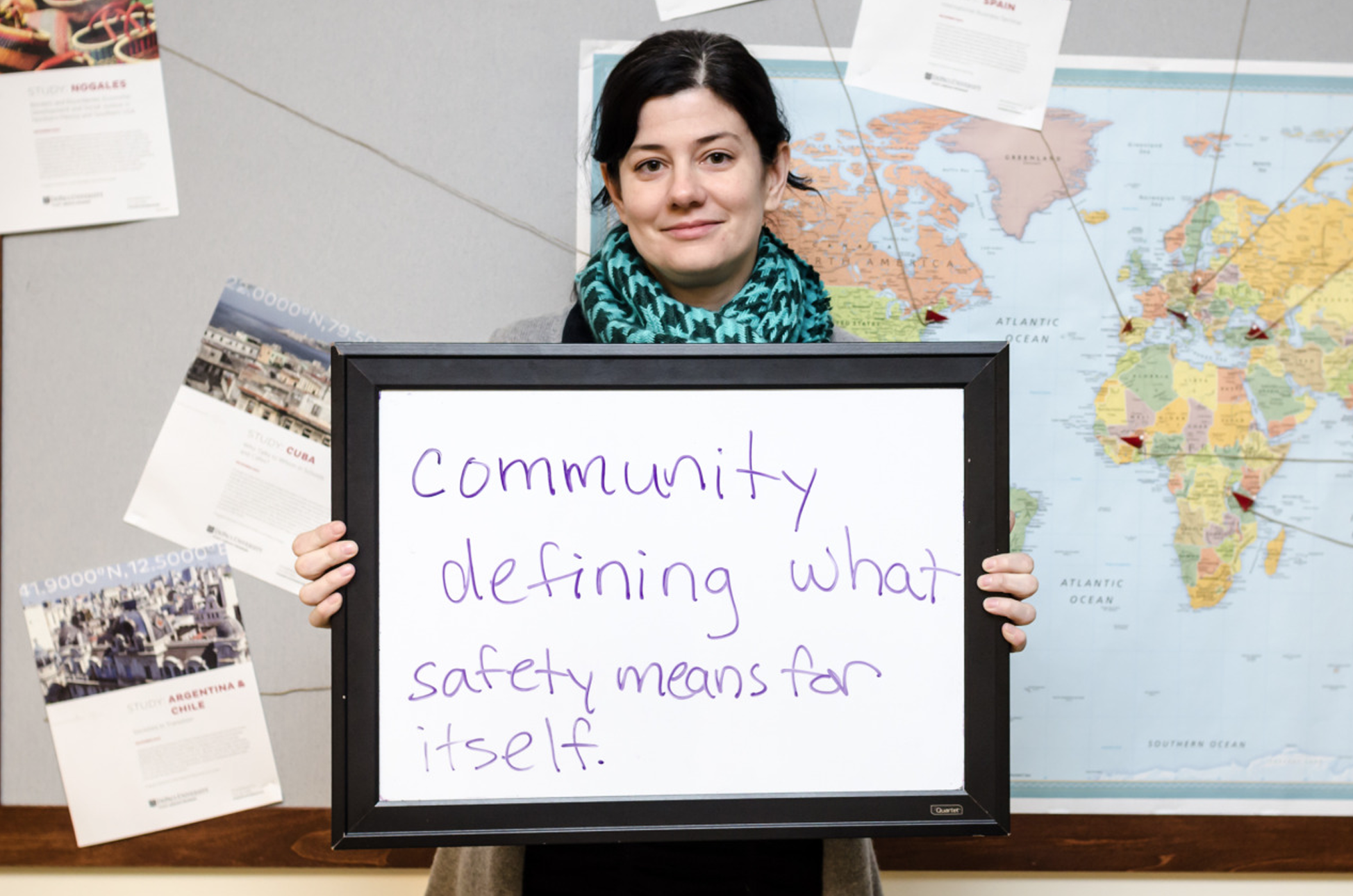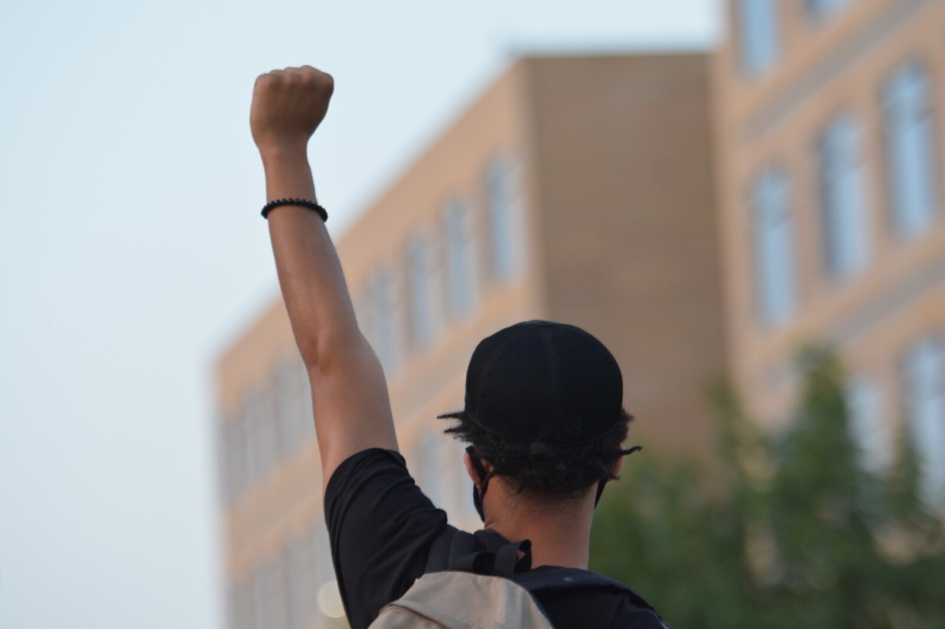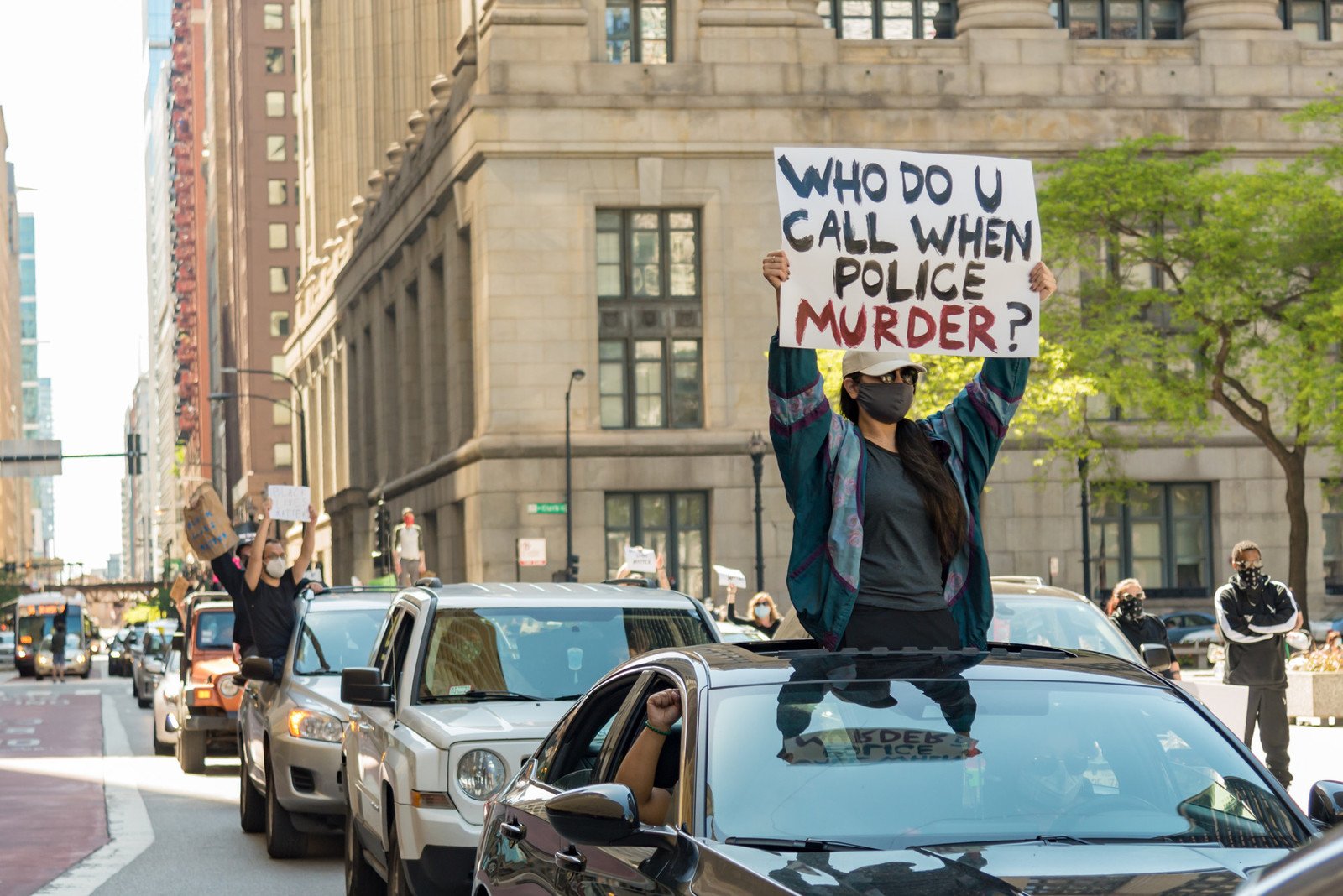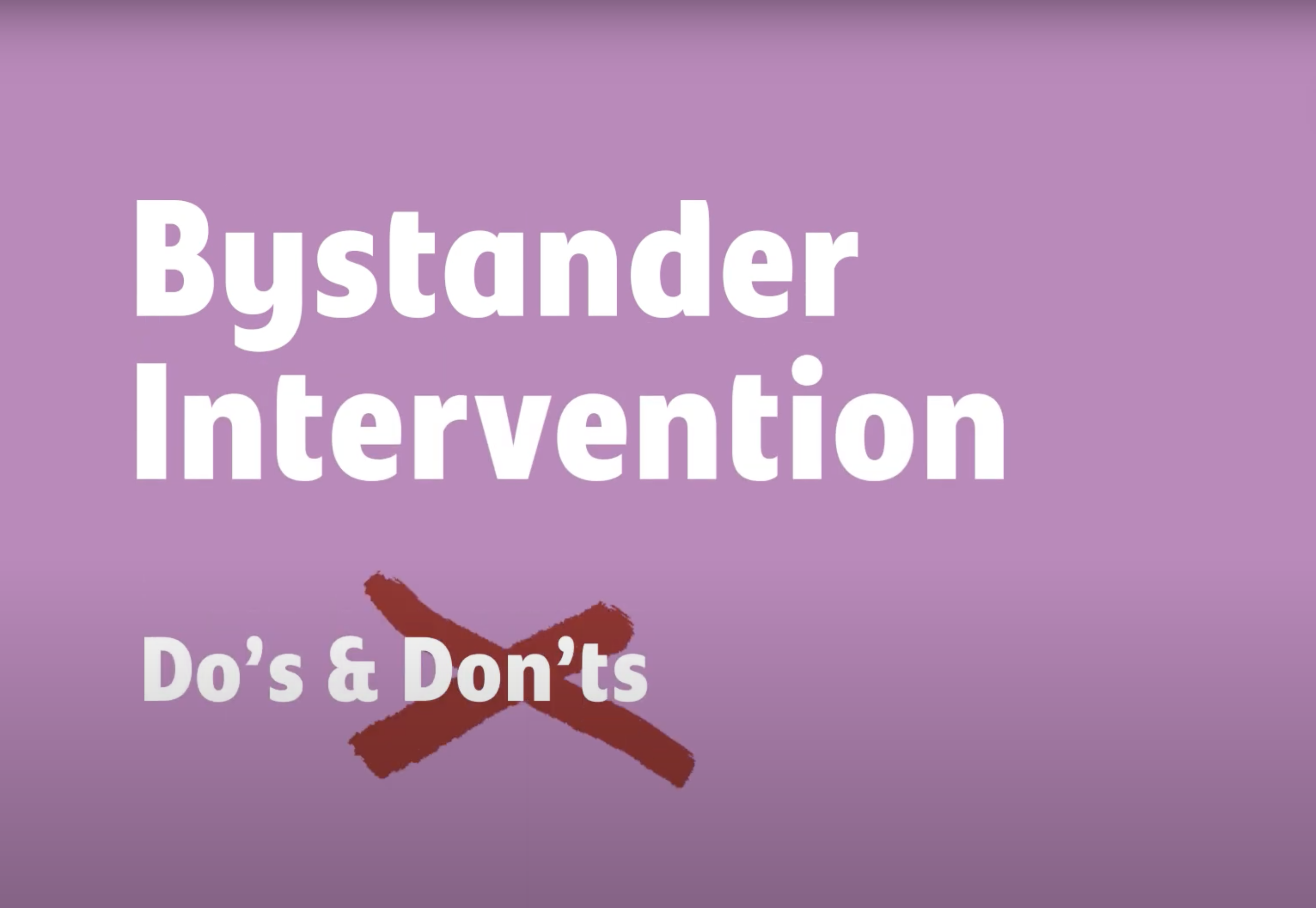
Video: AFSC
Do you know what to do if you witness someone being physically attacked or harassed in public? It's important that we know how to intervene while keeping everyone safe.
Use these tips to assess what to do while considering the safety of all people involved.
The do's and don'ts of bystander intervention
DO make your presence as a witness known. If possible, make eye contact with the person being harassed and ask them if they want support. Move yourself near the person being harassed. If you feel you can risk doing so, create distance or a barrier between the person being harassed and the attacker. If it’s safe to do so—and the person being harassed consents—film or record the incident.
DO take cues from the individual being harassed. Is the person engaging with the harasser or not? You can make suggestions, “Would you like to walk with me over here? Move to another train car? For him to leave you alone?,” and then follow their lead. Notice if the person being harassed is resisting in their own way, and honor that. (Especially white folks, don’t police the tone of the person being harassed). Follow up with the individual being harassed after the incident is over, see if they need anything else.
DO keep both of you safe. Assess your surroundings—are there others nearby you can pull in to support? Working in a team is a good idea, if it is possible. Can you and the person being harassed move to a safer space/place?
DON'T call the police. For many communities experiencing harassment right now (including Arab and Muslim communities, Black people, queer and trans folks, and immigrants) the police can cause a greater danger for the person being harassed.
DON'T escalate the situation. The goal is to get the person being harassed to safety, not to incite further violence from the attacker.
DON'T do nothing. Silence is dangerous—it communicates approval and leaves the victim high and dry. If you find yourself too nervous or afraid to speak out, move closer to the person being harassed to communicate your support with your body.
4Ds: Learn how to Distract, Delegate, Direct, and Delay
Use these practical tips on de-escalating instances of harassment and oppressive interpersonal violence. Content adapted by AFSC from Abbey Fox, Thought Catalogue, Jes Skolnik, Hollaback, and the People’s Response Team.
DISTRACT: Distraction is a subtle and creative way to intervene. Distract either the harasser or the target with conversation unrelated to the harassment to derail and de-escalate the situation.
Examples:
- Ask for directions; Spill your drink “accidentally;”
- Pretend you know one of them.
DELEGATE: Bring in a 3rd party to help, possibly someone with more perceived authority.
Examples:
- Alert a store manager, bus driver, club bouncer, or someone else to help intervene. Do not call the police unless requested.
DIRECT: Respond directly to the aggressor or physically intervene if necessary. Be confident, assertive, calm.
Examples:
- Walk up to engage a street harasser and directly ask them to stop their behavior.
DELAY: If you can’t intervene in the moment, you can check in with the person being harassed afterwards to see if you can do anything to support them, illustrating that they are not alone.
Examples:
- “Is everything okay? Is there anything I can do?” “Is there someone we can call?” “Can I buy you a cup of coffee?”
